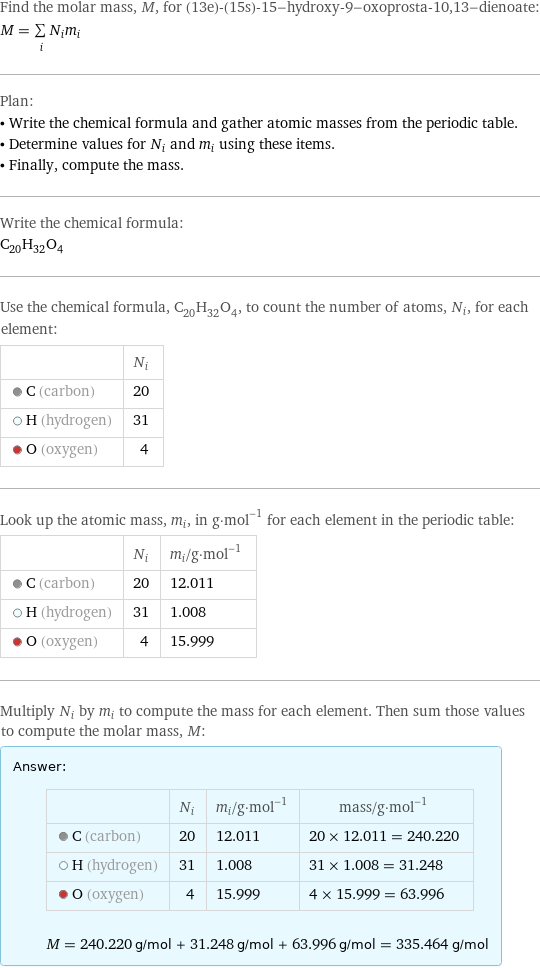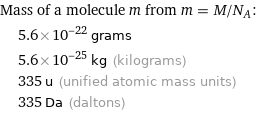Input interpretation

(13e)-(15s)-15-hydroxy-9-oxoprosta-10, 13-dienoate | molar mass
Result

Find the molar mass, M, for (13e)-(15s)-15-hydroxy-9-oxoprosta-10, 13-dienoate: M = sum _iN_im_i Plan: • Write the chemical formula and gather atomic masses from the periodic table. • Determine values for N_i and m_i using these items. • Finally, compute the mass. Write the chemical formula: C_20H_32O_4 Use the chemical formula, C_20H_32O_4, to count the number of atoms, N_i, for each element: | N_i C (carbon) | 20 H (hydrogen) | 31 O (oxygen) | 4 Look up the atomic mass, m_i, in g·mol^(-1) for each element in the periodic table: | N_i | m_i/g·mol^(-1) C (carbon) | 20 | 12.011 H (hydrogen) | 31 | 1.008 O (oxygen) | 4 | 15.999 Multiply N_i by m_i to compute the mass for each element. Then sum those values to compute the molar mass, M: Answer: | | | N_i | m_i/g·mol^(-1) | mass/g·mol^(-1) C (carbon) | 20 | 12.011 | 20 × 12.011 = 240.220 H (hydrogen) | 31 | 1.008 | 31 × 1.008 = 31.248 O (oxygen) | 4 | 15.999 | 4 × 15.999 = 63.996 M = 240.220 g/mol + 31.248 g/mol + 63.996 g/mol = 335.464 g/mol
Unit conversion

0.33546 kg/mol (kilograms per mole)
Comparisons

≈ 0.47 × molar mass of fullerene ( ≈ 721 g/mol )

≈ 1.7 × molar mass of caffeine ( ≈ 194 g/mol )

≈ 5.7 × molar mass of sodium chloride ( ≈ 58 g/mol )
Corresponding quantities

Mass of a molecule m from m = M/N_A: | 5.6×10^-22 grams | 5.6×10^-25 kg (kilograms) | 335 u (unified atomic mass units) | 335 Da (daltons)

Relative molecular mass M_r from M_r = M_u/M: | 335